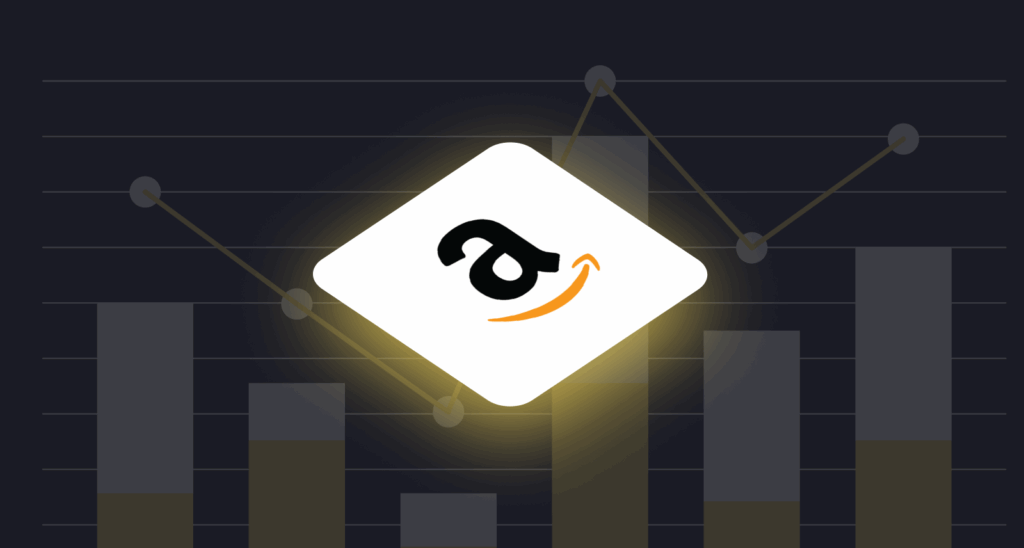
Over the last few decades, Amazon has come a long way, from being a niche online marketplace to one of the five biggest tech companies in the world, sharing the stage with Google, Microsoft, Apple, and Facebook.
Today, the area of interest of Amazon goes far beyond a basic e-commerce experience. Cloud computing, AI, digital streaming, and security are the main directions that the company focuses on aside from the retail market, even though Amazon accounts for 50% of the e-commerce market in the US alone.
In this post, we want to share some ideas on how to use different Amazon features for your business in 2021, and how digital entrepreneurs — common retailers as well as tech-preneurs — can benefit from these possibilities.
Amazon FBA — No Warehouse, No problem
Fulfillment By Amazon (FBA) is a service provided by Amazon that allows sellers to send all their products to the fulfillment centers where they are stored, packed and then shipped. In other words, Amazon takes care of all the ‘legwork’ connected with the delivery of the merchandise to the end customers.
With the FBA model, selling products on the platform looks like this:
The seller sends products to Amazon
↓
Amazon stores them
↓
The customer makes a purchase
↓
Amazon picks the product and sends it to a customer
↓
Seller gets paid
The FBA program is a great solution for those Amazon-preneurs who can’t afford big warehouses or don’t have enough manpower to manage the shipping of the products. Currently, Amazon includes two pricing options in its FBA program:
- Individual — costs $0,99 per item sold + additional fees. Suits best for those who are only starting to sell on a platform with less than 40 items sold per month and limited or no ad campaign at all.
- Professional — costs $39,99 per month + additional fees. A great option for experienced sellers who have already gained a solid client base and want to use advanced platform tools like reports or Amazon API.
With an increasing number of sellers who subscribe to the FBA program, it may seem that this is a “win-win” strategy and the only way of running your business on Amazon. However, FBA comes with its limitations, and won’t fit every seller on a platform. Here’s a quick breakdown of all the pros and cons that come with the FBA program:
| FBA ADVANTAGES | FBA DISADVANTAGES |
|---|---|
| Reduces the seller’s overheads from logistics | It may be expensive due to platform fees |
| Removes the need for a warehouse | Reduces the seller’s overheads from logistics |
| Takes a little time to manage | Stretches the supply chain |
In any case, we recommend basing a decision of whether to go with this service or not on evaluating three key factors:
- What you sell — consider FBA if your items sell fast or all your products are of a smaller size, which helps to keep FBA fees at a reasonable level.
- How much you sell — consider FBA if you are a big seller; for small sellers, the need for a warehouse is low.
- How many resources do you have? Consider FBA if you don’t have enough budget to staff up.
Scraping Amazon: Main Why’s and How’s
Before starting a business or bringing a new product to the market, entrepreneurs normally assess their ideas by conducting research and analyzing a great deal of data. And this is where scraping comes in handy.
Scraping is a technique of collecting data where a program (bot) gathers data from website pages. On Amazon, in particular, sellers use scraping tools to find out competing products, prices, top-rated products, ranks, and reviews. All this information helps better plan ad campaigns, pricing policy, and better assess the target audience, etc.
The platform, however, has very strict rules when it comes to scraping, and sometimes trying to source data from Amazon can turn out to be a complete headache. Here are the main challenges that sellers may face when scrapping Amazon:
- Amazon can easily detect bots. By analyzing browser agent behavior, the platform can figure out whether the requests are made by a human or a bot. If, for example, URLs change repeatedly, with only one variable that actually changes on a regular interval, it is a red sign of scraping. In such cases, Amazon blocks IPs or uses the CAPTCHA system to prevent data scraping.
- Amazon's structure can be too complex to scrape. The platform offers millions of products on its pages, and way too often, different projects require different page structures. For example, the page for a Portable Air Conditioner will differ from the one for the diamond bracelet, simply because of the different data (characteristics) that have to be displayed to the customer. Amazon is not just another regular website, and it makes scraping it difficult and confusing for scraping bots.
- Amazon scraping is time- and resource-consuming. Amazon stores gigantic amounts of data. Thus, before scrapping, it’s better to make sure you have all the needed resources at your disposal to collect data successfully. To aggregate large amounts of information, use up-to-date hardware and cloud technologies. Otherwise, it may take forever to source and store the data you need.
Getting Started with Amazon Web Services and Amazon API Gateway
Now we are going into the subject which is not directly connected to retail, but is still an important part of the services offered by Amazon. This section will be especially helpful for tech-preneurs or startups whose digital resources are limited.
Amazon Web Services (AWS) is a cloud platform that offers remote servers, storage, computing capabilities, networking, and security solutions. AWS hosts 175 services and is used by Netflix, LinkedIn, Twitch, BBC, Facebook, Adobe, Twitter, NASA, Samsung, Sony, etc.
Amazon API Gateway is a part of AWS and is used to connect non-AWS clients (applications) with the AWS backend. It takes care of the processing of all the API calls, traffic management, access control, and cross-origin resource sharing, thus taking a huge burden off the tech-preneurs' shoulders.
What else do tech startups get when using AWS API Gateway?
- Cost efficiency — Amazon offers several pricing options depending on the number of API requests, with the lowest price of $0,90 per million requests.
- Efficient development — AWS API lets you run multiple API versions simultaneously, test, iterate, and, thus, release new versions of the product faster.
- Flexible performance — Thanks to its scalable nature, the AWS API allows dealing with any number of requests without worrying about the system breaking down in peak periods.
Final Thoughts
Selling your products on Amazon as well as using other Amazon services is a great way to start your business and reach out to a global audience. In this brief overview, we tried to combine different nuances of doing business with the help of one of the biggest retail and tech giants in the world.
Even though this is not a complete list, the subjects described above sometimes fall off the sight of beginners as well as experienced Amazon-preneurs. If you have a startup idea and need help bringing it to life, contact us at Honeycomb Software.
As a Microsoft Gold Partner, we know all the ins and outs of developing digital products for e-commerce and related fields. To get in touch, call us at the phone number shown at the top of this page, or hit the “Start a Project” button and fill out a form!









